Itchy hives on legs and arms. Itchy Hives on Arms and Legs: Causes, Types, and Treatments Explained
What are the common triggers for hives on arms and legs. How can you differentiate between acute and chronic urticaria. What are the most effective treatments for managing itchy hives. When should you seek medical attention for persistent hives.
Understanding Hives: A Common Skin Reaction
Hives, medically known as urticaria, are raised, itchy rashes that can appear on various parts of the body, including the arms and legs. These skin reactions occur when the immune system responds to a trigger, causing mast cells to release histamine into the skin. This process results in the characteristic red or purplish spots or patches that can be both uncomfortable and distressing.
While hives can develop anywhere on the body, they are particularly common on the arms and legs due to these areas’ increased exposure to external factors. Understanding the nature of hives, their causes, and available treatments can help individuals manage this condition more effectively.
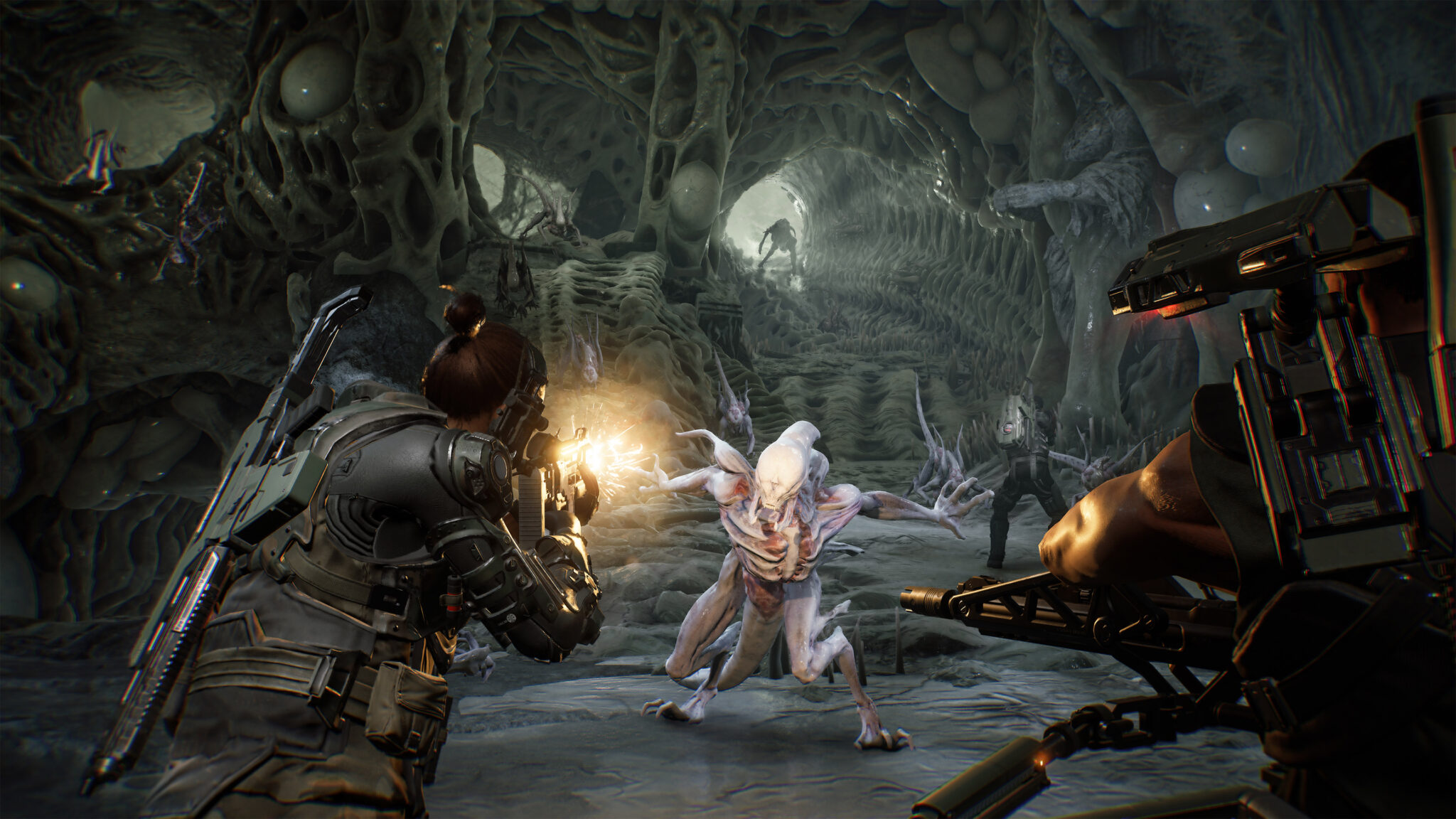
Common Triggers for Hives on Arms and Legs
Hives can be triggered by a wide range of factors, both allergic and non-allergic. Some of the most common triggers include:
- Physical stimuli (pressure, temperature changes)
- Food allergies (eggs, seafood, nuts)
- Medications (penicillin, anti-inflammatory drugs)
- Bacterial or viral infections
- Contact allergens (latex, certain plants)
- Insect bites or stings
- Airborne allergens (pollen, mold spores)
In some cases, hives may appear without an identifiable cause, a condition known as idiopathic urticaria. When hives are localized to the arms or legs, they are often the result of physical triggers or contact allergens.
Can stress cause hives on arms and legs?
Yes, stress can indeed trigger hives on arms and legs. While not a direct cause, stress can weaken the immune system and make the body more susceptible to developing hives in response to other triggers. Additionally, stress can exacerbate existing hive conditions, making outbreaks more frequent or severe.

Types of Urticaria: Acute vs. Chronic
Urticaria can be classified into two main categories based on the duration of symptoms:
- Acute Urticaria: Symptoms last less than 6 weeks
- Chronic Urticaria: Symptoms persist for more than 6 weeks
Chronic urticaria can be further divided into three subtypes:
- Chronic spontaneous urticaria: No clear trigger, symptoms occur at least twice weekly
- Chronic inducible urticaria: Specific physical triggers cause hives
- Episodic chronic urticaria: Symptoms appear less than twice weekly
How long do individual hives typically last?
Individual hives usually disappear within 24 hours. However, in cases of chronic urticaria, new hives may continue to appear as the old ones fade, creating a persistent cycle of outbreaks that can last for weeks or even months.
Effective Treatments for Managing Itchy Hives
There are several treatment options available for managing hives on the arms and legs, ranging from over-the-counter medications to prescription drugs and home remedies. The most appropriate treatment will depend on the severity and duration of symptoms.

Over-the-Counter Treatments
Antihistamines are the primary OTC treatment for hives. These medications work by blocking the effects of histamine, reducing itching and swelling. In some cases, higher doses than typically recommended may be necessary for effective relief.
Prescription Medications
If OTC treatments prove ineffective, a doctor may prescribe:
- Sedating antihistamines
- Short-term systemic corticosteroids
- Omalizumab (FDA-approved for chronic urticaria)
- Cyclosporine
Home Remedies
Several home remedies can help alleviate the discomfort associated with hives:
- Applying cool compresses to affected areas
- Taking a comfortably cool bath
- Wearing loose, cotton clothing
- Avoiding extreme temperatures
- Limiting activities that cause sweating
Are there any natural remedies that can help with hives on arms and legs?
Yes, several natural remedies may provide relief from hives on arms and legs. These include applying aloe vera gel, using a colloidal oatmeal bath, drinking chamomile tea, and applying a mixture of baking soda and water to the affected areas. However, it’s important to note that while these remedies may offer temporary relief, they are not substitutes for medical treatment in severe or persistent cases.

Preventing Hives on Arms and Legs
Preventing hives can be challenging, especially in cases of chronic urticaria where the trigger is unknown. However, if a specific trigger has been identified, the most effective preventive measure is to avoid it. This may involve:
- Keeping a food diary to identify potential food allergies
- Avoiding known allergens in the environment
- Using hypoallergenic products on the skin
- Managing stress through relaxation techniques
- Maintaining a consistent skincare routine
How can you identify triggers for hives on arms and legs?
Identifying triggers for hives on arms and legs often requires a process of elimination and careful observation. Keeping a detailed diary of activities, foods consumed, and environmental factors prior to hive outbreaks can help pinpoint potential triggers. In some cases, allergy testing conducted by a healthcare professional may be necessary to identify specific allergens causing the reactions.
When to Seek Medical Attention for Hives
While many cases of hives can be managed at home, there are situations where medical attention is necessary. Consult a doctor if:
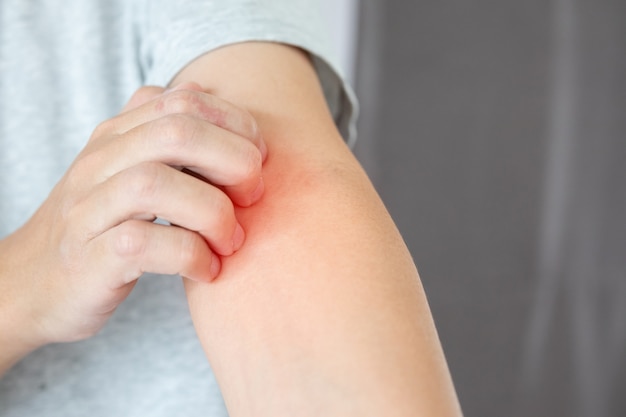
- Hives persist for more than 6 weeks
- OTC treatments are ineffective
- You suspect an underlying allergy
- Hives are accompanied by symptoms of angioedema (swelling beneath the skin)
- You experience signs of anaphylaxis (severe allergic reaction)
What are the signs of a severe allergic reaction associated with hives?
Signs of a severe allergic reaction (anaphylaxis) associated with hives include difficulty breathing, swelling of the throat or tongue, dizziness, rapid pulse, and a drop in blood pressure. These symptoms require immediate emergency medical attention as they can be life-threatening.
Hives in Different Skin Types
While the underlying mechanisms of hives are the same across all skin types, their appearance can vary. On lighter skin, hives typically appear as red or pink raised welts. On darker skin tones, hives may appear as darker patches or have a purplish hue. Regardless of skin color, the key characteristics of itching, swelling, and discomfort remain consistent.
Do hives on arms and legs look different on various skin tones?
Yes, hives can appear differently on various skin tones. On lighter skin, they often present as red or pink raised welts. On darker skin, hives may appear as darker patches, sometimes with a purplish or brownish hue. Despite these visual differences, the sensation of itching and discomfort is universal across all skin types.

The Impact of Hives on Quality of Life
Chronic hives, especially when occurring on visible areas like the arms and legs, can significantly impact an individual’s quality of life. The persistent itching and visible rashes can lead to:
- Sleep disturbances
- Decreased productivity at work or school
- Social anxiety and self-consciousness
- Emotional distress and frustration
Managing the psychological impact of chronic hives is an important aspect of treatment. Support groups, counseling, and stress management techniques can be beneficial for individuals dealing with persistent urticaria.
How can individuals cope with the psychological effects of chronic hives?
Coping with the psychological effects of chronic hives involves a multi-faceted approach. This may include joining support groups to connect with others experiencing similar challenges, practicing mindfulness and stress-reduction techniques, seeking counseling or therapy to address anxiety or depression, and educating friends and family about the condition to foster understanding and support. Additionally, working closely with healthcare providers to manage symptoms effectively can help improve overall quality of life.
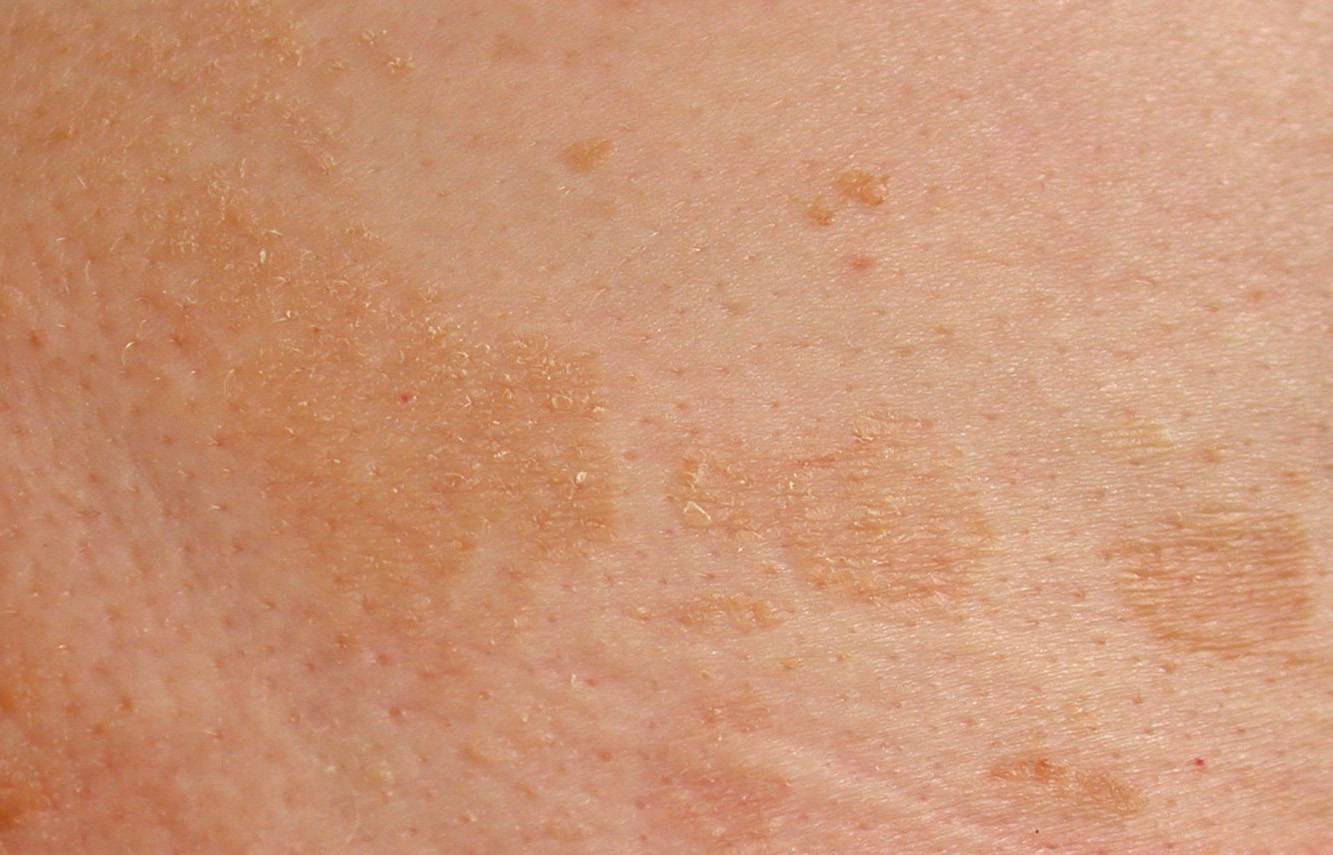
Advances in Hives Research and Treatment
The field of urticaria research is continuously evolving, with new treatments and understanding emerging. Recent advances include:
- Development of targeted biologic therapies
- Improved understanding of the immunological mechanisms behind chronic urticaria
- Exploration of the gut-skin axis and its role in hive development
- Research into the genetic factors contributing to chronic urticaria
These advancements offer hope for more effective treatments and potentially even preventive measures for individuals prone to developing hives on their arms and legs.
What are some promising new treatments for chronic hives?
Several promising new treatments for chronic hives are currently being researched and developed. These include novel biologics that target specific components of the immune system, such as interleukin inhibitors and Bruton’s tyrosine kinase inhibitors. Additionally, researchers are exploring the potential of probiotics and microbiome-based therapies to modulate the immune response and reduce hive outbreaks. While many of these treatments are still in clinical trials, they offer hope for more effective management of chronic urticaria in the future.

Hives in common areas: What to know
Hives are a form of rash that can often appear when the body responds to a trigger. They can occur anywhere on the body. Hives are particularly common on the arms and legs because the limbs have more exposure to external factors.
Hives, or urticaria, are raised rashes that can develop as red or purplish spots or patches. The rashes are often itchy and uncomfortable.
Hives typically occur when mast cells, which are part of the immune system, trigger an allergic reaction by releasing histamine into the skin. Histamine is a chemical messenger that the immune system releases in response to an injury or allergic reaction.
Mast cells cause hives and control how long they remain.
A similar process known as angioedema occurs when mast cells deeper in the skin release histamine.
Hives can develop due to an allergic reaction to food, medication, or something in the environment, such as being licked by a dog or from non-allergic sources, such as infection or inflammation.
Individual hives typically go away within 24 hours. However, urticaria can persist for several weeks, even months. This can result in new hives appearing as the previous ones fade.
Hives can occur anywhere on the skin. They are particularly common in areas of the body that experience higher pressure, such as the waistline and the groin.
Read on to learn more about the causes, types, and treatments of hives.
Hives can result from:
- physical triggers, such as pressure
- allergic reactions, such as food allergies
- medical conditions, such as infection
Triggers cause the immune system to respond by sending histamines and similar chemicals into the skin, where they cause hives. Triggers can include:
- medication, such as penicillin or anti-inflammatory drugs
- food or drink, such as eggs or seafood
- bacterial infection, such as strep throat
- viral infection, such as infectious mononucleosis
- contact triggers, including latex
- insect bites or stings
- allergens in the air, such as pollen or mold spores
- physical conditions, such as cold temperature or pressure
In rare cases, urticaria can be a hereditary condition.
When hives have no known cause, they are called idiopathic urticaria.
If hives only appear on the arms or legs, they are likely the result of a physical trigger, such as extreme temperature, or a contact allergen, such as latex.
Learn about contact dermatitis here.
Urticaria can be acute or chronic.
With acute urticaria, symptoms go away within 6 weeks. However, when a person has chronic urticaria, the condition can persist for longer than this.
There are three types of chronic urticaria:
- Chronic spontaneous urticaria is where the trigger is unclear, and symptoms occur at least twice each week.
- Chronic inducible urticaria is where specific, physical triggers, such as pressure, cause hives.
- Episodic chronic urticaria can overlap with chronic inducible urticaria, but typically, symptoms appear less than twice each week.
Learn about hives on black skin here.
Treatment options include over-the-counter (OTC) medication, prescription medication, and home remedies.
OTC options include antihistamines, which people can take in higher doses than doctors typically recommend.
If OTC medication does not work, a doctor may prescribe:
- sedating antihistamines
- systemic corticosteroids for short term use
- omalizumab (the only FDA approved treatment for chronic urticaria)
- cyclosporine
However, medication may not always be necessary, as hives can go away by themselves. Home remedies that can help to ease symptoms include:
- soothing the area with a cool compress
- taking a comfortably cool bath
- avoiding tight or itchy clothing and wearing loose, cotton clothes
- avoiding particularly hot or cold temperatures
- avoiding activities that cause sweating
Learn about ways to treat hives here.
It is not always possible to prevent hives from developing on the arms and legs, as around 50% of people with chronic urticaria never find out what causes their hives to appear.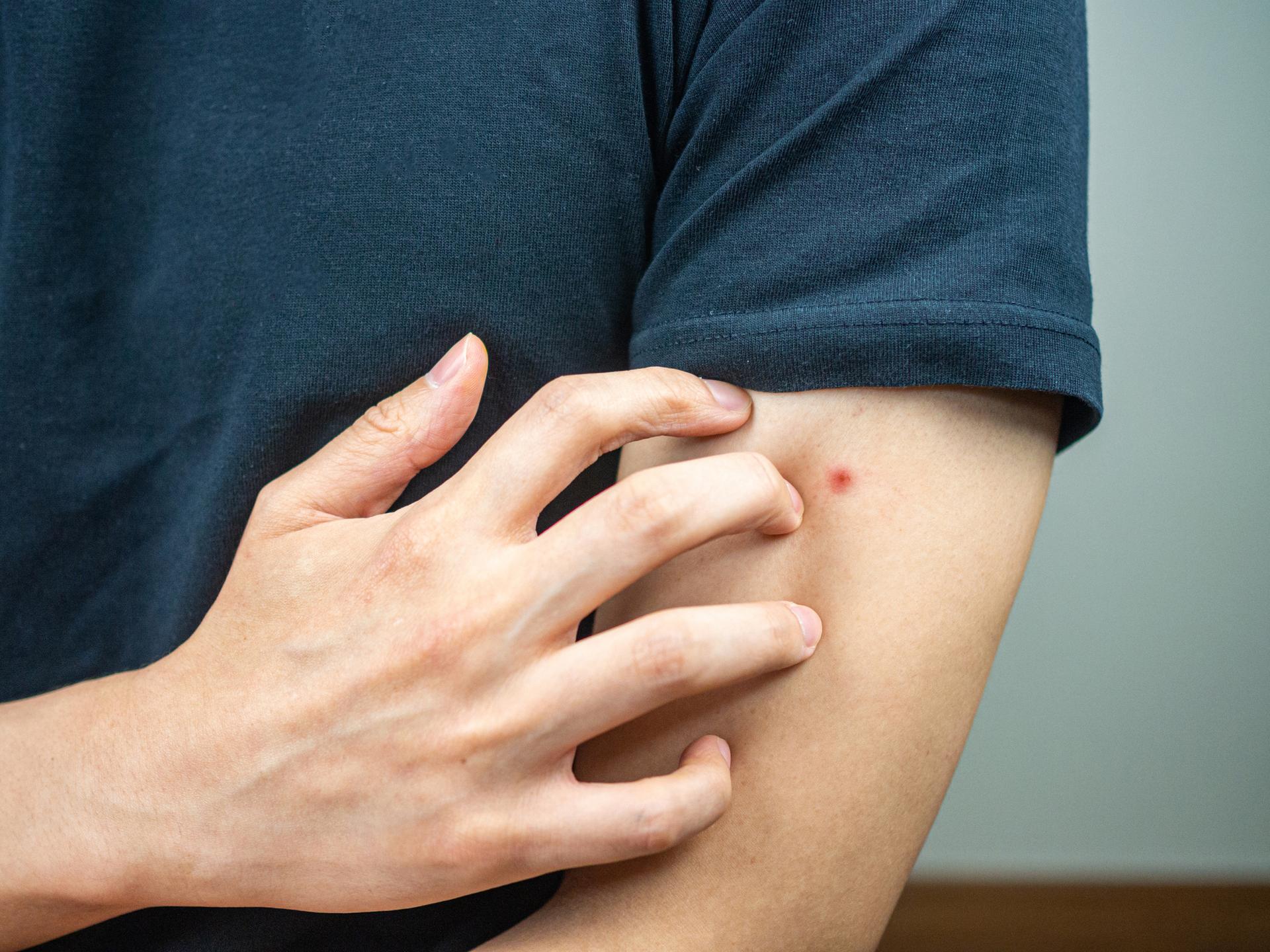 However, if there is a clear trigger, the most effective preventive measure is to try to avoid it.
However, if there is a clear trigger, the most effective preventive measure is to try to avoid it.
Learn more about hives that come and go daily here.
See a doctor if:
- hives continue to flare up for more than 6 weeks
- OTC treatment is not helping
- individuals want to check for potential allergies
Taking a photograph of hives before an appointment can help a doctor make a diagnosis, as the skin may clear up before the appointment.
If swelling underneath the skin accompanies a rash, a person may have angioedema. This condition can cause similar symptoms but requires swift treatment, as it can cause life threatening swelling that affects the ability to breathe.
Anyone who suspects they have angioedema should see a doctor for a diagnosis as soon as possible.
Severe allergic reactions can cause anaphylaxis, an extreme response that can cause a person to go into anaphylactic shock. Seek immediate medical attention if extreme symptoms develop.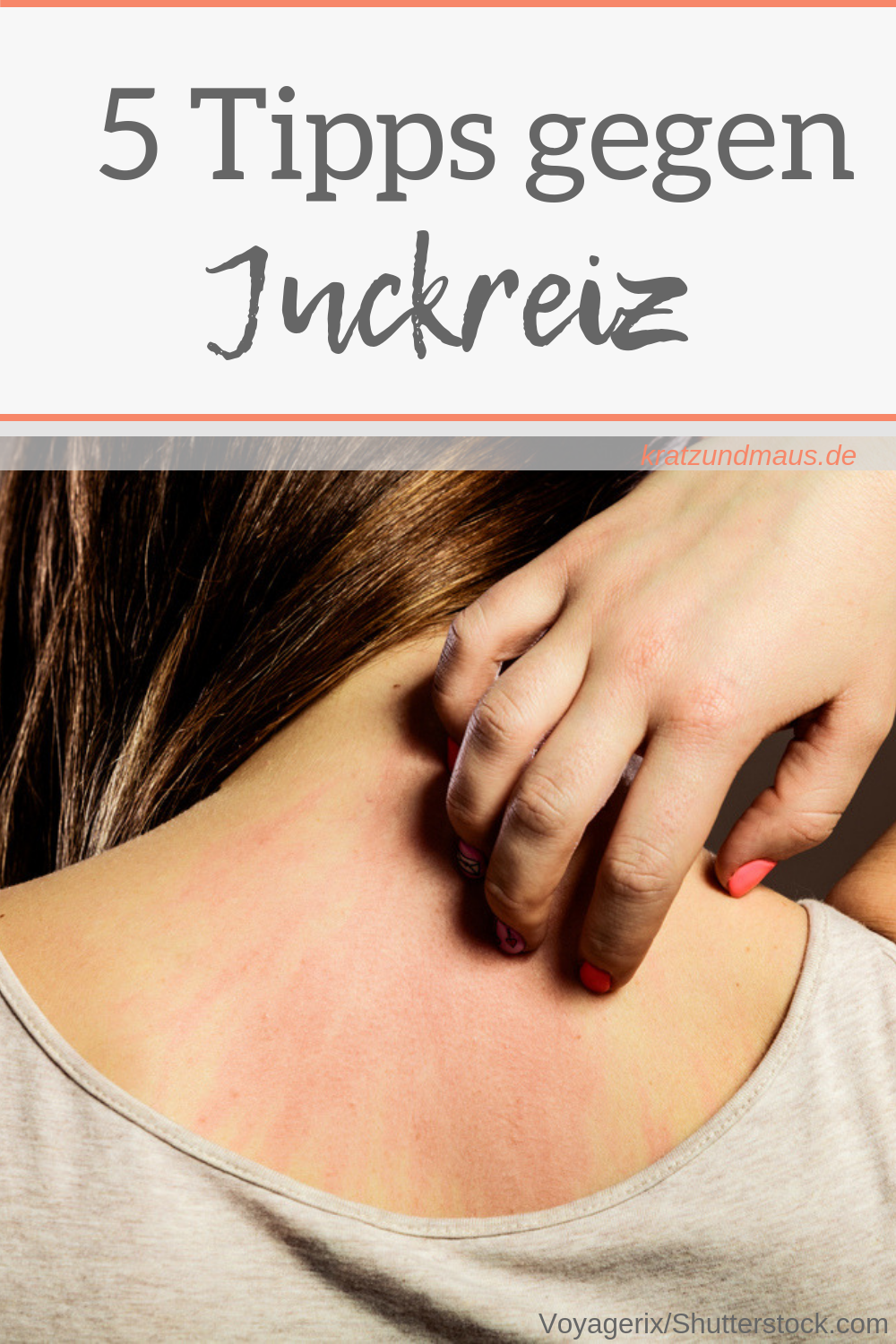
Learn about the differences between urticaria and angioedema here.
Hives, or wheals, occur when the immune system sends histamines and other chemicals into the skin in response to triggers.
Urticaria can be acute, where it goes away within 6 weeks. Chronic urticaria lasts longer than this. The hives themselves disappear within 24 hours, but flare-ups may persist as new hives develop.
Physical triggers, allergic reactions, or medical conditions can cause hives, and they can develop anywhere on the body. The arms and legs are more likely to react to contact triggers, such as allergens, because they have greater exposure.
Hives can be itchy and uncomfortable, but they will generally go away on their own. Home remedies such as a cool compress can help to ease symptoms.
If urticaria symptoms continue, a doctor can suggest a treatment plan to help.
Hives in common areas: What to know
Hives are a form of rash that can often appear when the body responds to a trigger. They can occur anywhere on the body. Hives are particularly common on the arms and legs because the limbs have more exposure to external factors.
They can occur anywhere on the body. Hives are particularly common on the arms and legs because the limbs have more exposure to external factors.
Hives, or urticaria, are raised rashes that can develop as red or purplish spots or patches. The rashes are often itchy and uncomfortable.
Hives typically occur when mast cells, which are part of the immune system, trigger an allergic reaction by releasing histamine into the skin. Histamine is a chemical messenger that the immune system releases in response to an injury or allergic reaction.
Mast cells cause hives and control how long they remain.
A similar process known as angioedema occurs when mast cells deeper in the skin release histamine.
Hives can develop due to an allergic reaction to food, medication, or something in the environment, such as being licked by a dog or from non-allergic sources, such as infection or inflammation.
Individual hives typically go away within 24 hours. However, urticaria can persist for several weeks, even months. This can result in new hives appearing as the previous ones fade.
This can result in new hives appearing as the previous ones fade.
Hives can occur anywhere on the skin. They are particularly common in areas of the body that experience higher pressure, such as the waistline and the groin.
Read on to learn more about the causes, types, and treatments of hives.
Hives can result from:
- physical triggers, such as pressure
- allergic reactions, such as food allergies
- medical conditions, such as infection
Triggers cause the immune system to respond by sending histamines and similar chemicals into the skin, where they cause hives. Triggers can include:
- medication, such as penicillin or anti-inflammatory drugs
- food or drink, such as eggs or seafood
- bacterial infection, such as strep throat
- viral infection, such as infectious mononucleosis
- contact triggers, including latex
- insect bites or stings
- allergens in the air, such as pollen or mold spores
- physical conditions, such as cold temperature or pressure
In rare cases, urticaria can be a hereditary condition.
When hives have no known cause, they are called idiopathic urticaria.
If hives only appear on the arms or legs, they are likely the result of a physical trigger, such as extreme temperature, or a contact allergen, such as latex.
Learn about contact dermatitis here.
Urticaria can be acute or chronic.
With acute urticaria, symptoms go away within 6 weeks. However, when a person has chronic urticaria, the condition can persist for longer than this.
There are three types of chronic urticaria:
- Chronic spontaneous urticaria is where the trigger is unclear, and symptoms occur at least twice each week.
- Chronic inducible urticaria is where specific, physical triggers, such as pressure, cause hives.
- Episodic chronic urticaria can overlap with chronic inducible urticaria, but typically, symptoms appear less than twice each week.
Learn about hives on black skin here.
Treatment options include over-the-counter (OTC) medication, prescription medication, and home remedies.
OTC options include antihistamines, which people can take in higher doses than doctors typically recommend.
If OTC medication does not work, a doctor may prescribe:
- sedating antihistamines
- systemic corticosteroids for short term use
- omalizumab (the only FDA approved treatment for chronic urticaria)
- cyclosporine
However, medication may not always be necessary, as hives can go away by themselves. Home remedies that can help to ease symptoms include:
- soothing the area with a cool compress
- taking a comfortably cool bath
- avoiding tight or itchy clothing and wearing loose, cotton clothes
- avoiding particularly hot or cold temperatures
- avoiding activities that cause sweating
Learn about ways to treat hives here.
It is not always possible to prevent hives from developing on the arms and legs, as around 50% of people with chronic urticaria never find out what causes their hives to appear. However, if there is a clear trigger, the most effective preventive measure is to try to avoid it.
However, if there is a clear trigger, the most effective preventive measure is to try to avoid it.
Learn more about hives that come and go daily here.
See a doctor if:
- hives continue to flare up for more than 6 weeks
- OTC treatment is not helping
- individuals want to check for potential allergies
Taking a photograph of hives before an appointment can help a doctor make a diagnosis, as the skin may clear up before the appointment.
If swelling underneath the skin accompanies a rash, a person may have angioedema. This condition can cause similar symptoms but requires swift treatment, as it can cause life threatening swelling that affects the ability to breathe.
Anyone who suspects they have angioedema should see a doctor for a diagnosis as soon as possible.
Severe allergic reactions can cause anaphylaxis, an extreme response that can cause a person to go into anaphylactic shock. Seek immediate medical attention if extreme symptoms develop.
Learn about the differences between urticaria and angioedema here.
Hives, or wheals, occur when the immune system sends histamines and other chemicals into the skin in response to triggers.
Urticaria can be acute, where it goes away within 6 weeks. Chronic urticaria lasts longer than this. The hives themselves disappear within 24 hours, but flare-ups may persist as new hives develop.
Physical triggers, allergic reactions, or medical conditions can cause hives, and they can develop anywhere on the body. The arms and legs are more likely to react to contact triggers, such as allergens, because they have greater exposure.
Hives can be itchy and uncomfortable, but they will generally go away on their own. Home remedies such as a cool compress can help to ease symptoms.
If urticaria symptoms continue, a doctor can suggest a treatment plan to help.
Rash and irritation from sweat: how to prevent
Rash and irritation on the skin in the armpit area from sweat is a very common phenomenon that can begin at any time. Natural microscopic yeast-like fungi of the genus Candida on your skin cause irritation and rashes if the natural balance of the skin is disturbed. This can happen when sweat from the sebaceous glands remains on the skin without completely evaporating.
Natural microscopic yeast-like fungi of the genus Candida on your skin cause irritation and rashes if the natural balance of the skin is disturbed. This can happen when sweat from the sebaceous glands remains on the skin without completely evaporating.
What causes rash and skin irritation from sweat? Symptoms of prickly heat
Rash and irritation on the skin in the armpit area from sweat is a very common phenomenon that can start at any time. Natural microscopic yeast-like fungi of the genus Candida on your skin cause irritation and rashes if the natural balance of the skin is disturbed. This can happen when sweat from the sebaceous glands remains on the skin without completely evaporating.
Skin itching, irritation, red rash appears; there may be a burning sensation in the armpits or the skin may become damaged. Sweat rash can occur with prickly heat, excessive sweating, changing body care products (shower gel, soap, deodorant), wearing synthetic fabrics, too tight clothing, as well as rubbing the shoulder straps of a backpack or armpit bag.
Some people have very sensitive skin and react immediately to odors and fragrances. Also, allergies can occur to ingredients in body and skin care products, such as alcohol and aluminum salts.
Where does sweat irritation occur?
Sweat rash and irritation tend to occur where skin surfaces rub against each other, such as underarms, back of knees, between legs, groin, and chest and under breasts. Also, irritation can begin where clothing rubs against the skin and sweat is released (for example, when wearing tank tops, the fabric rubs against the skin of the armpits).
How to deal with irritation and rash in the armpit area?
Most types of rash and sweat irritation occur as a natural reaction to an irritant. If you’re sensitive to perfumes or fragrances, or prone to eczema, use unscented antiperspirants and body care products. For example, Rexona Odorless antiperspirant, which is suitable even for sensitive skin. Also try using an emollient or moisturizer along with an antiperspirant or deodorant to help maintain the skin’s natural balance.
To combat irritation and rashes on the skin in the armpits, follow these simple rules:
- When exercising, wear loose clothing and choose natural fabrics that can absorb sweat, such as cotton and linen.
- In hot weather, if the skin becomes irritable, stay hydrated and take cool showers and baths.
- If a new skin care product causes irritation, stop using it.
- If the rash develops further, wear light clothing made from natural fabrics and avoid synthetic fabrics as they can irritate the skin.
- Antiperspirants containing aluminum salts may help control perspiration. This will help keep the skin fresh and clean throughout the day and fight one of the causes of rashes and irritation – afterwards. If your armpits become irritated and rash, use a moisturizer along with an antiperspirant, and try antiperspirants that contain skin care and moisturizers for sensitive skin and deodorant creams.
If all of the above does not help, and the rash and irritation in the armpit area does not go away, seek help from a doctor.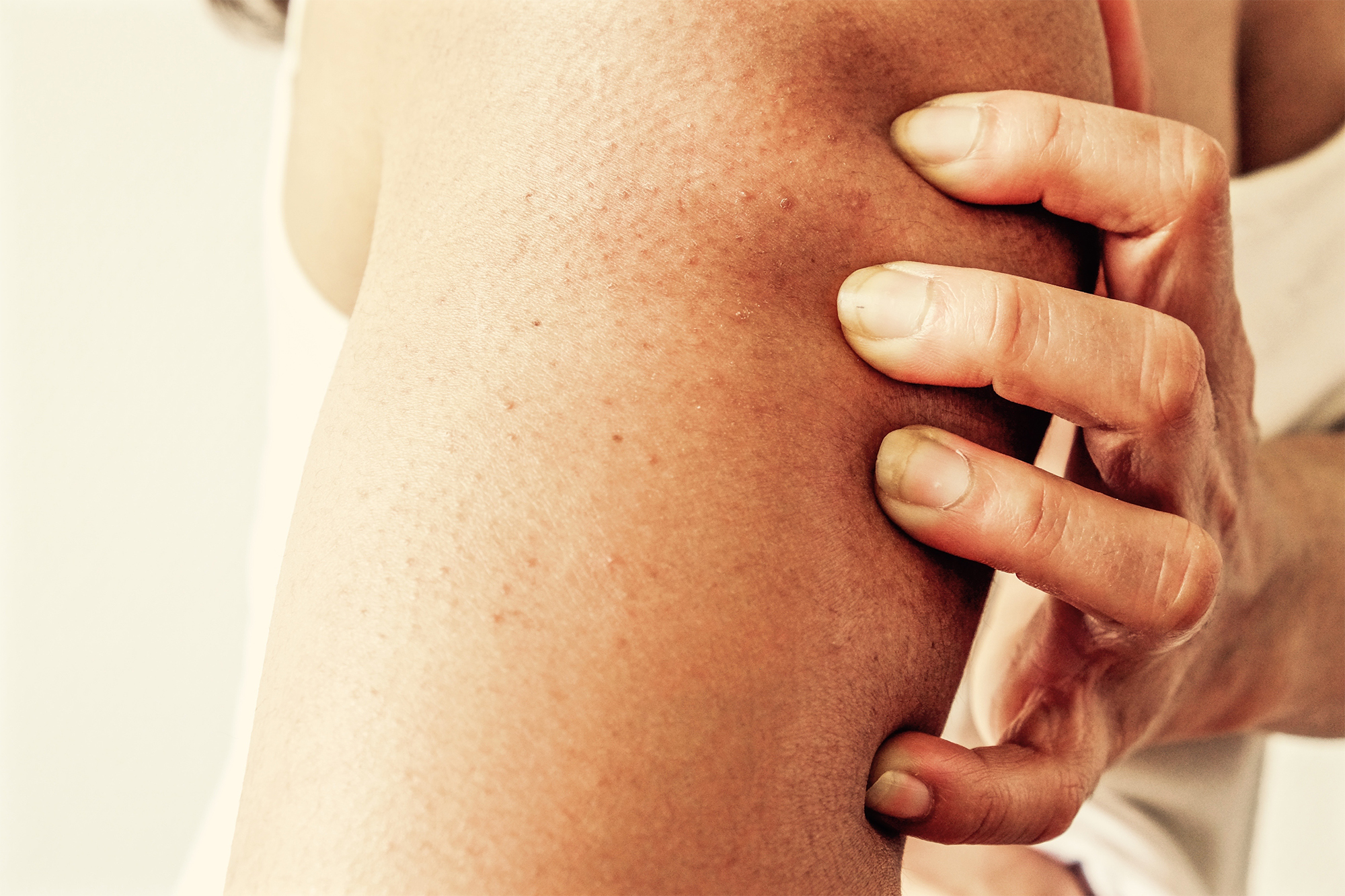
You may also be interested
(
87
items
)
Preloader
Itching and rash in a child
A B C D
E F G H I
K L M N O
P R S T U
F X C H W
Shch E Yu Ya
If your child’s rash is itchy, it’s most likely caused by an allergy, infection, or skin disease. Fungal skin infections are also accompanied by itching, although (with the exception of pregnancies) they rarely occur before adolescence. Some children have a habit of scratching their skin, which in itself causes irritation and itching. Scratching further damages the skin, predisposing to infection. This vicious circle is especially easy to develop in children with allergies.
There are many causes of itching without a rash, such as dry skin or eczema, as well as some serious but rare conditions. In girls, itching can cause vulvovaginitis, and in teenage boys, fungal diseases. The doctor will diagnose and prescribe treatment. Make sure your child maintains personal hygiene.
DOCTOR’S CONSULTATION
Call the pediatrician if:
- the child has a rash on the skin
WARNING!
If your child has an itchy skin condition, use a mild soap and avoid heavily scented products.
Rinse your laundry thoroughly after washing to completely remove detergent residue.
ASK YOURSELF | POSSIBLE CAUSE | WHAT TO DO |
Does the baby have red, scaly scales on their cheeks, where they come into contact with the diaper, or anywhere else? Does anyone in the family have eczema? | Eczema | Contact your pediatrician , he will diagnose and prescribe treatment. Avoid wool clothing. |
Does the child have a red or pink scaly rash and blisters in any particular part of the body? Do these areas of the body come into contact with clothing, nickel-plated jewelry? Have you changed the brand of soap or washing powder? | Allergic contact dermatitis | Consult your pediatrician . |
Has the child been burned by nettles or similar plants? | Allergic reaction to plant poison | Wash the burn area with soap and water, and launder clothing. Explain to the child that it is not necessary to comb the skin. If the rash is severe, the face or genitals are affected, and an infection develops, consult a pediatrician |
Does your child have an itchy rash on an exposed area of skin? Are there red pimples? | Insect bites | Do a cold compress. If the rash persists or infection develops, take the child to the pediatrician |
Does the child scratch the skin all the time? Are there nits on the hair or red marks on the skin? | Parasitic infestation – lice (on the head) or scabies (on the skin) | Call your pediatrician immediately . |
Does the child have an itchy rash after fever, cough, symptoms of SARS? | Viral infection, e.g. chickenpox | Call a pediatrician |
Has the child been prescribed any medications? | Side effect of medication | Show the child to the pediatrician . He will determine if the drug may cause a skin rash and adjust treatment if necessary |
Itching around the anus, in the buttocks, especially at night? Does the girl have irritation in the vagina? | Pinworms | The pediatrician examines the child and prescribes treatment. Ask your doctor how to prevent the spread of infection |
A teenage boy complains of itching around the genitals? | Fungal infection | The doctor will prescribe treatment. |
FOR INFORMATION
Help for eczema
Eczema is characterized by a pink or red, often weeping, scaly rash on the elbows, popliteal fossae, cheeks, neck, groin, and back of the hands and feet. Disturbs a strong itch.
Eczema is more common in families in which someone suffers from allergic diseases. However, it must be remembered that in these cases, allergies are not the only possible cause of a skin rash in a child.
Eczema can start at any age. In children 2-6 months of age, it appears as itchy red pimples on the scalp that sometimes spread to the arms and body. In about half of the cases, the disease resolves by 2-3 years. In some children, recovery occurs by the age of 6, sometimes by adolescence. It happens that the disease worsens from time to time.
If you think certain foods are causing your flare-ups, cut them out of your diet. The pediatrician will help you here with advice. Use pH-neutral, unscented soap. In some cases, it is necessary to reduce the number of baths to 1-3 times a week. The pediatrician may recommend medication.
The pediatrician will help you here with advice. Use pH-neutral, unscented soap. In some cases, it is necessary to reduce the number of baths to 1-3 times a week. The pediatrician may recommend medication.
Pediatric appointment prices:
| Examination of a child by a pediatrician to obtain a certificate + certificate | 1950 |
| Visit of a pediatrician, consultation at home (Moscow) | 5400 | Pediatric home consultation for second child | 2550 |
Pediatricians:
Avzalova Darya Evgenievna
Pediatrician, neonatologist
Experience: 19 years
Reviews: 8
Call to house
Barzenok Tatyana Arsenievna
Chief physician, head of the pediatric department, pediatrician of the highest category
Experience: 29 years
Reviews: 15
Make an appointment
Belousova Elena Sergeevna
Pediatrician, Nephrologist
Experience: 19 years
Reviews: 14
Make an appointment
Call to house
Bykov Mikhail Viktorovich
Pediatrician of the highest category, specialist in ultrasound diagnostics, candidate of medical sciences
Experience: 26 years
Reviews: 3
Make an appointment
Call to house
Kazakova Liliya Valentinovna
Pediatrician, neonatologist, head of breastfeeding consultants service
Experience: 29 years
Reviews: 31
Make an appointment
Call to house
Sergienko Tatyana Yakovlevna
Pediatrician, pediatrician on duty at the pediatric hotline
Experience: 40 years
Reviews: 21
Make an appointment
Shlykova Vera Sergeevna
Pediatrician in the project “Service for Special Children”
Experience: 29 years
Reviews: 6
Make an appointment
Call to house
A complete list of symptoms (more than 70) that require the attention of a pediatrician can be found here.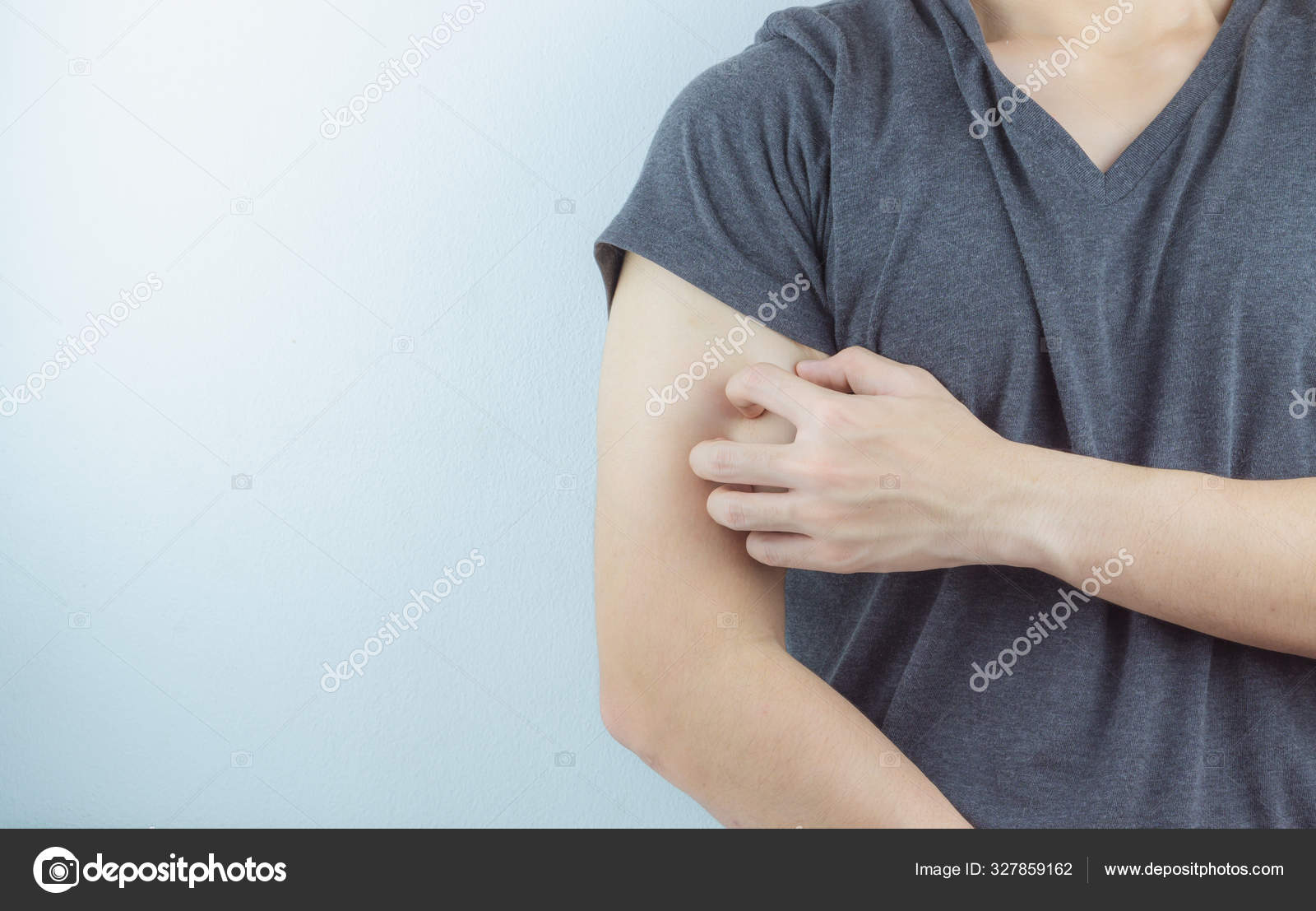

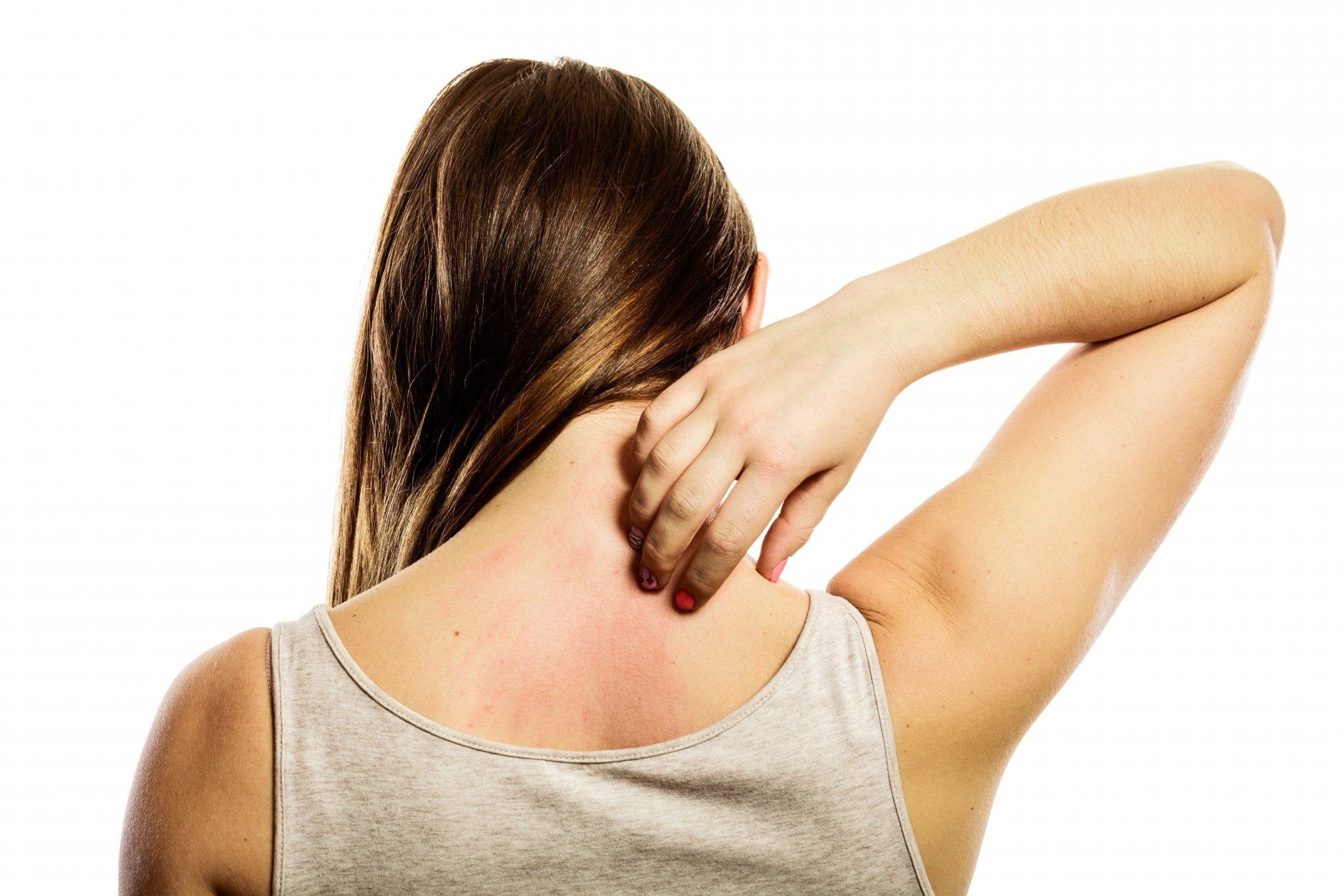 Avoid skin contact with a possible cause of allergy (for example, with detergents – in this case, it is necessary to rinse the laundry thoroughly). Drug treatment may be required.
Avoid skin contact with a possible cause of allergy (for example, with detergents – in this case, it is necessary to rinse the laundry thoroughly). Drug treatment may be required. He will recommend measures to eliminate parasites and disinfect the apartment. Notify child care facility
He will recommend measures to eliminate parasites and disinfect the apartment. Notify child care facility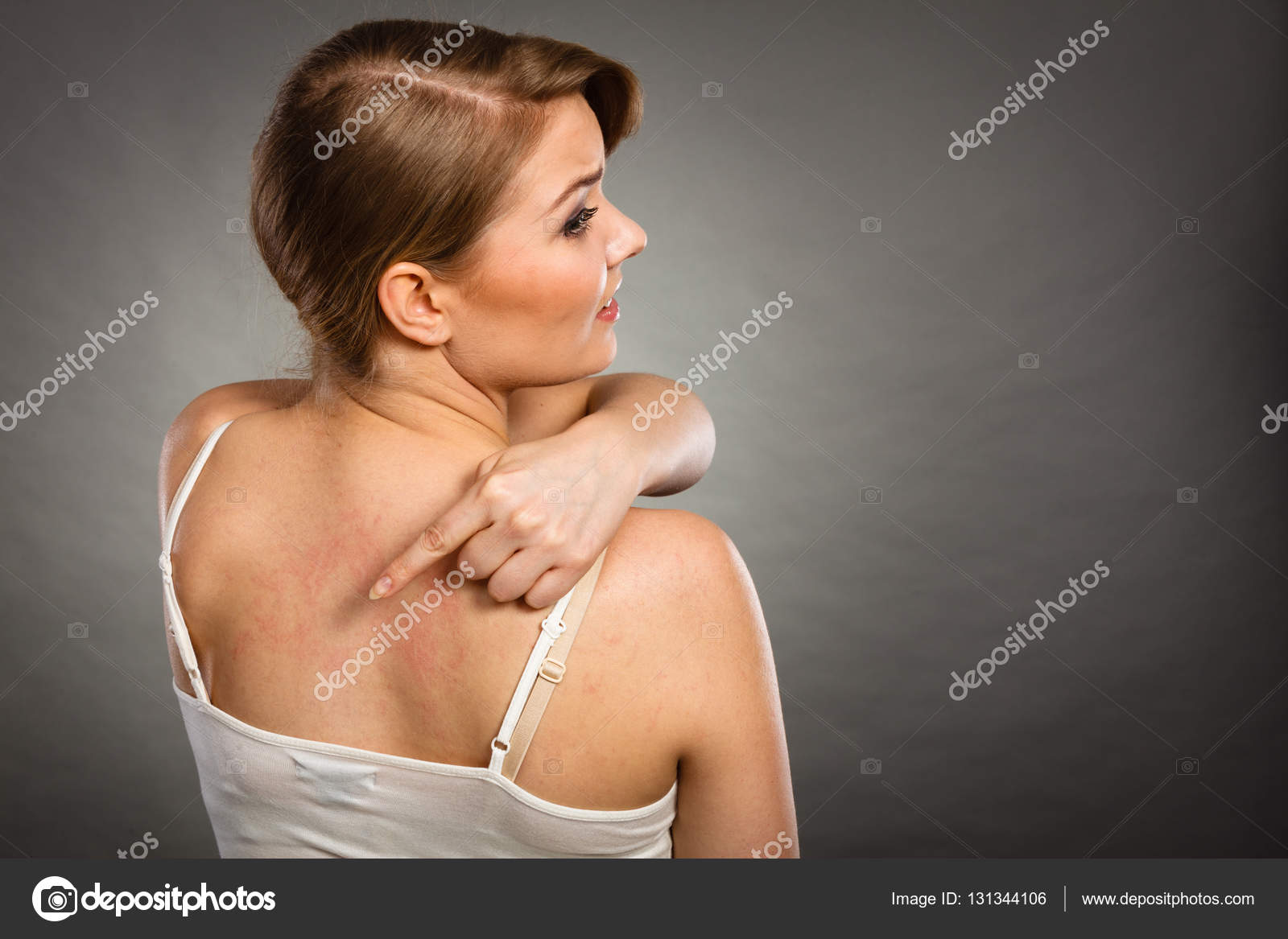 It is necessary to wash thoroughly with soap and then dry the affected skin with a separate napkin or disposable towel
It is necessary to wash thoroughly with soap and then dry the affected skin with a separate napkin or disposable towel